The Fidelity of African Christian Feminism.
I attended an artist talk at 32 Degrees East titled “Who Should We Build With”. The talk focused on how to choose collaborators in a growing art scene. In the Q&A session, I asked the panelists, two artists from Uganda and the UK, one of them being a vocal Christian, what their ethical and practical considerations were when working with Christian artists. Their response was that they respected and included everyone, regardless of their beliefs. One of the artists also sent me some materials that showcased a successful project on reconciliation of the church with enslaved communities, and claimed that some places had achieved a balance between Christianity and local cultures.
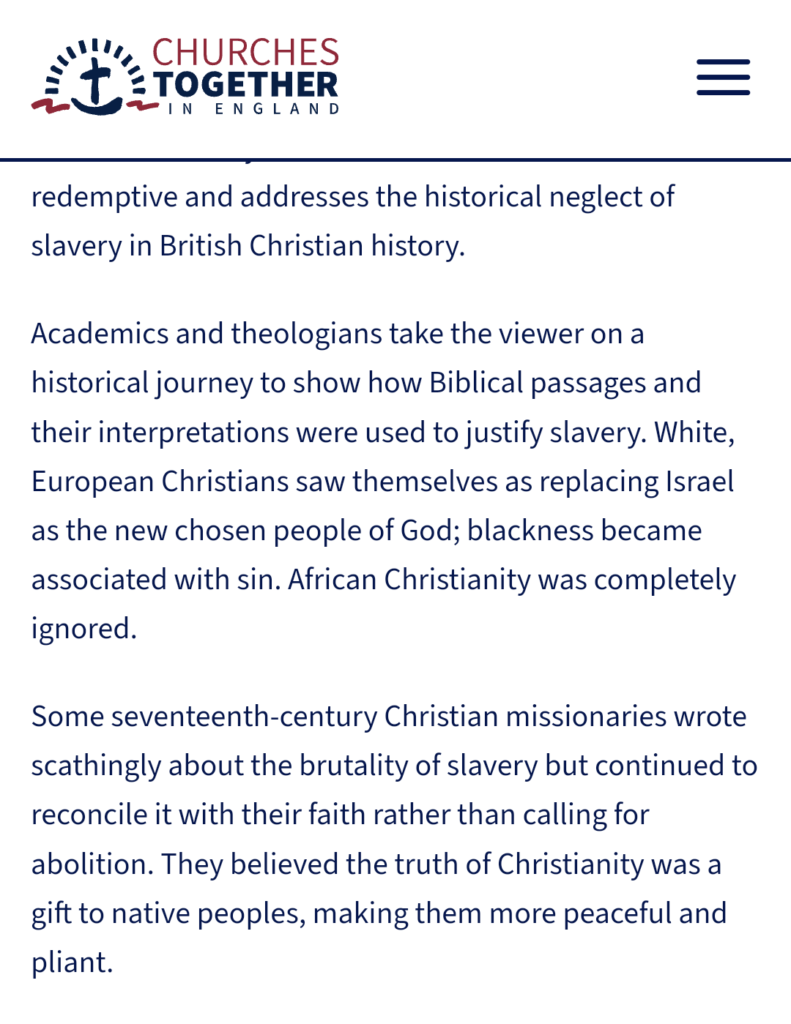
I was curious to learn more about this topic, so I discussed it with another Ugandan artist who told me they had ancestral roots in the Caribbean. They told me that their people had reconciled their faith with their history of slavery and oppression, and had reclaimed Christianity as a tool for community and healing. I replied that this was not the case in Uganda, and that I still believed that Christianity functioned as a colonial instrument here, as it did when it was first introduced to this land before it became Uganda.
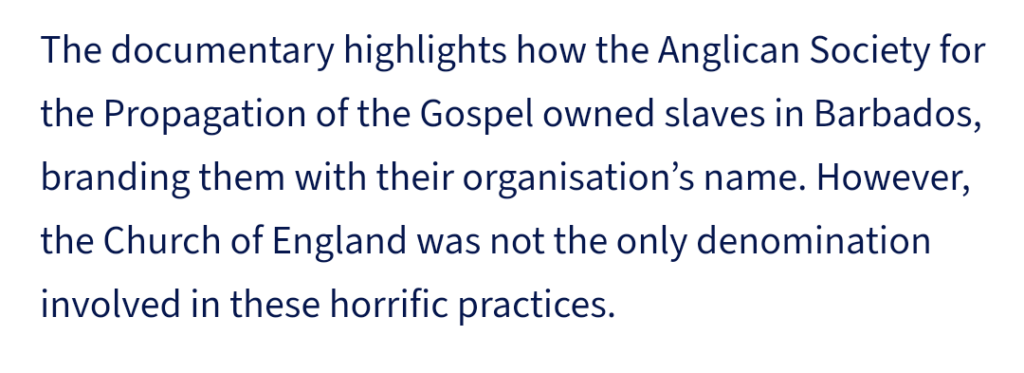
We agreed that one could not pursue this critique too fervently without risking an extremist position that might be as harmful as the belief itself. But we also wondered where to draw the line on how to treat Christianity in our context, considering its foundations, politics, literature, and effects on our culture.
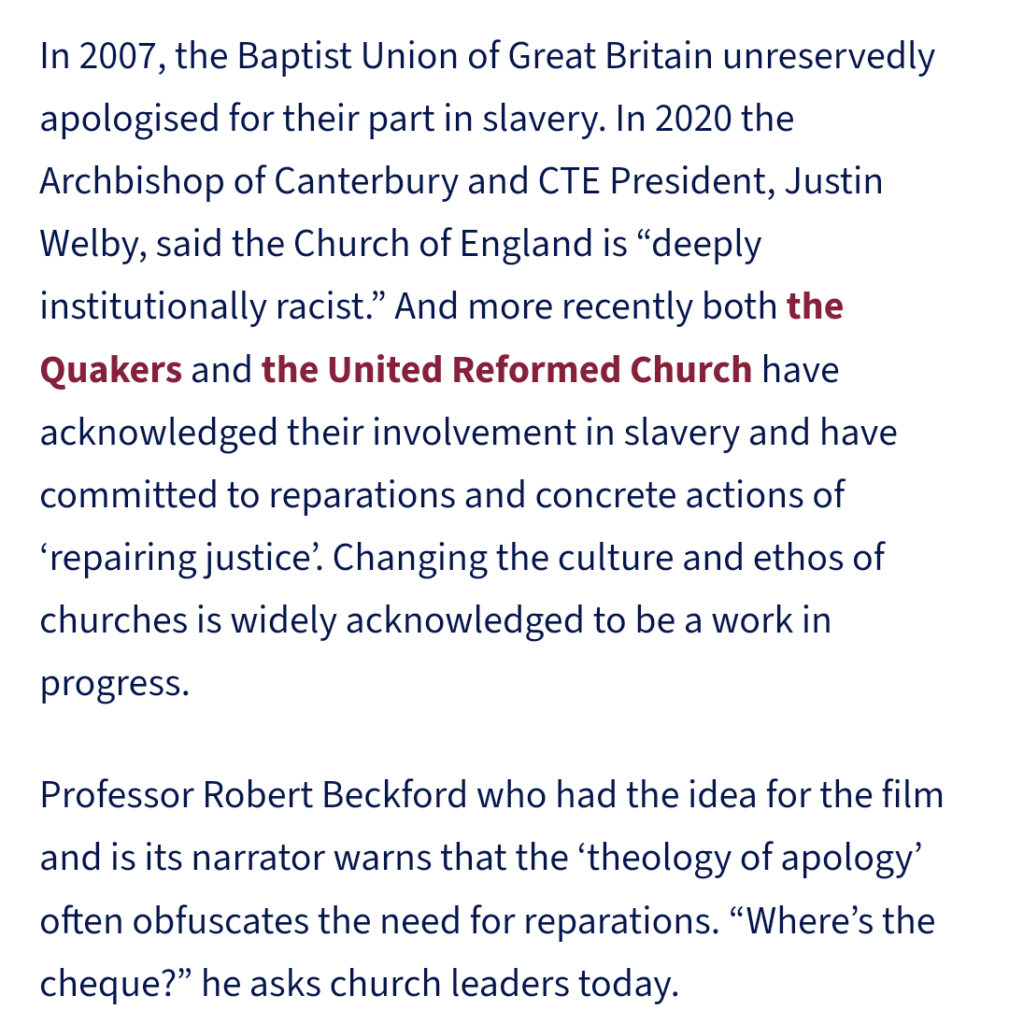
For example, should cultural institutions keep platforming artists who support Christian ideals? Should they be seen as representative of a people whose culture was robbed by the same religion they espouse? Especially if they are not willing to address these issues in a meaningful way? Take the exhibition “Sit With Me: The Diary of a Free Thinker”. The marketing for this exhibition explains the metaphor of sitting, the importance of discourse, and the time spent by the artist (three years) on creating this artwork. but no parralels are drawn between this artist and the ideas the work is trying to portray.
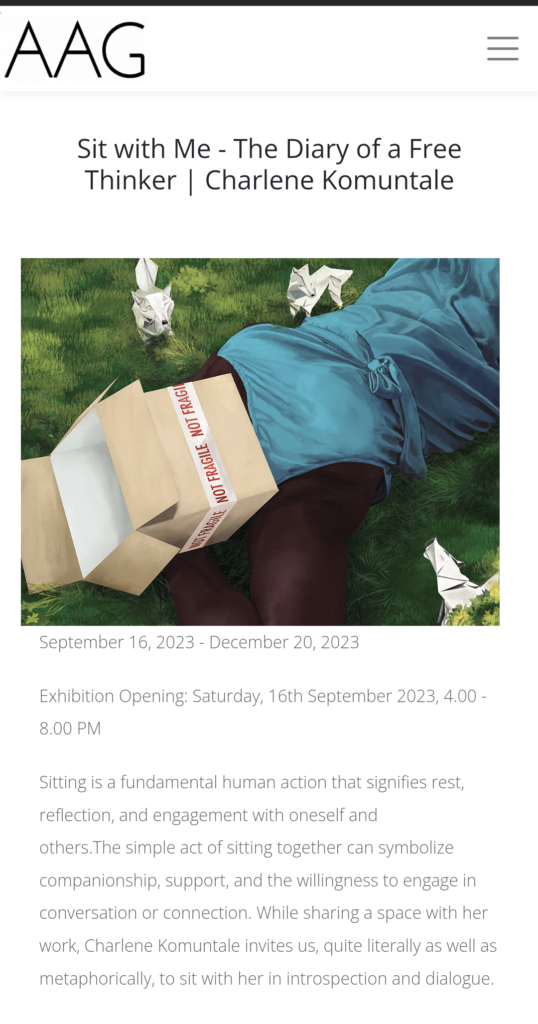
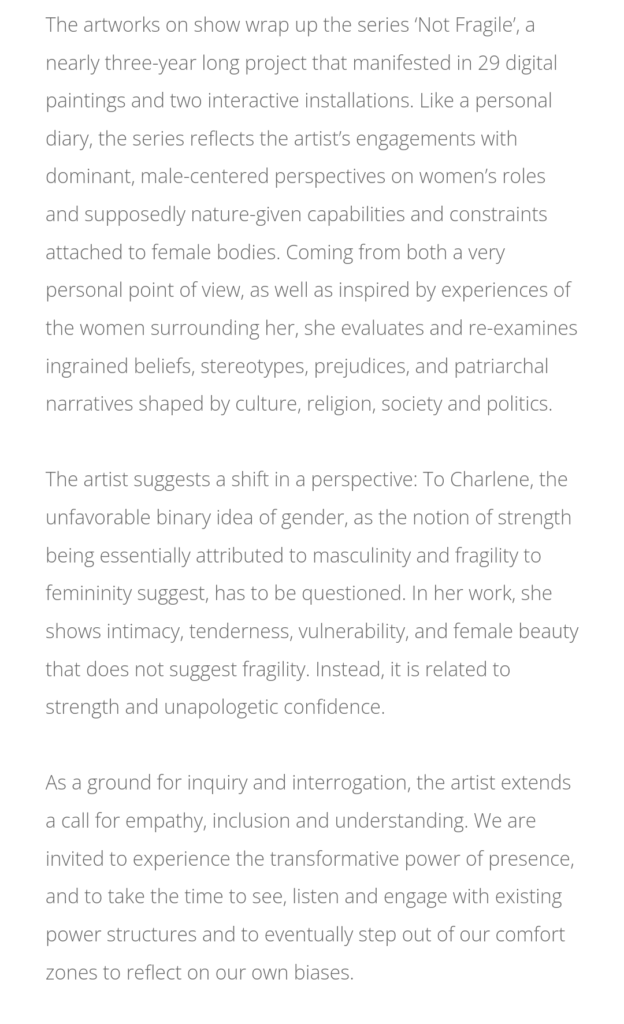
The artist identifies themselves as a Christian Feminist on their public platforms. The Bible’s views on feminism and black people are quite clear, and they are not favorable. For those who are not familiar with these views, here are some examples .
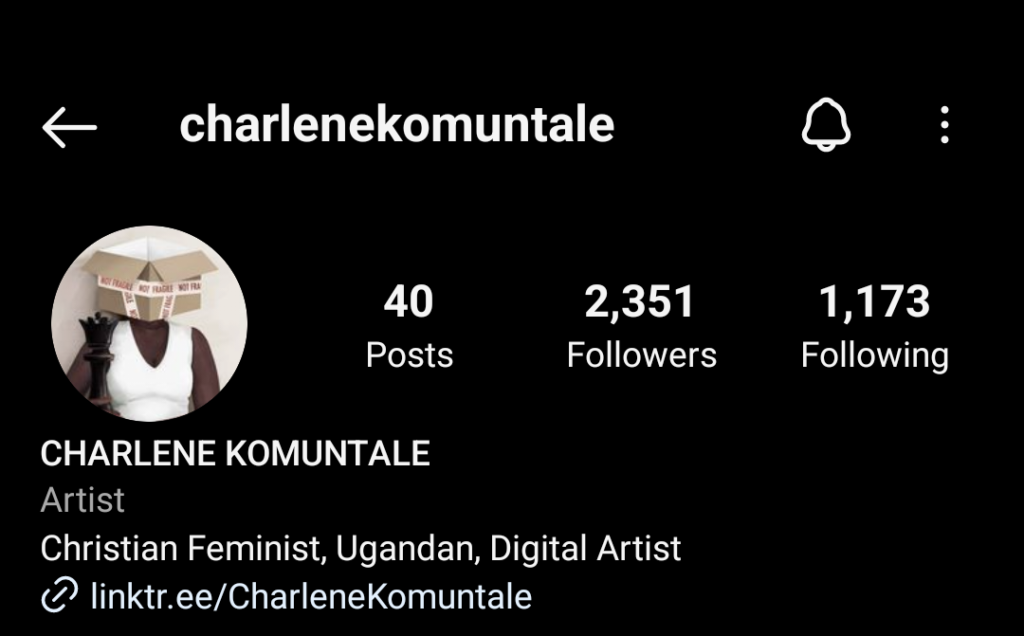
On feminisms;
1 Corinthians 14: 26-40. “The women should keep silent in the churches. For they are not permitted to speak, but should be in submission, as the Law also says. If there is anything they desire to learn, let them ask their husbands at home. For it is shameful for a woman to speak in church.”
Exodus 21:7-11“When a man sells his daughter as a slave, she will not be freed at the end of six years as the men are. If she does not satisfy her owner, he must allow her to be bought back again.”
Deuteronomy 25:11-12 “When men fight with one another and the wife of the one draws near to rescue her husband from the hand of him who is beating him and puts out her hand and seizes him by the private parts, then you shall cut off her hand. Your eye shall have no pity.”
on race relations and slavery.
Leviticus 25:44-46 “As for your male and female slaves whom you may have: you may buy male and female slaves from among the nations that are around you. You may also buy from among the strangers who sojourn with you and their clans that are with you, who have been born in your land, and they may be your property. You may bequeath them to your sons after you to inherit as a possession forever. You may make slaves of them, but over your brothers the people of Israel you shall not rule, one over another ruthlessly.”
The recent law that criminalized queer people in Uganda was also passed on the grounds of adhering to the Christian vision of the family and maintaining “African values.” The Anglican church in Uganda started a motion to secede from its founding Church of England after Canterbury declared that it’ll respect queer rights and even facilitate union in marriage.
“Coming from both a very personal point of view, as well as inspired by experiences of the women surrounding her, she evaluates and re-examines ingrained beliefs, stereotypes, prejudices, and patriarchal narratives shaped by culture, religion, society and politics. The artist suggests a shift in a perspective: To Charlene, the unfavorable binary idea of gender, as the notion of strength being essentially attributed to masculinity and fragility to femininity suggest, has to be questioned. In her work, she shows intimacy, tenderness, vulnerability, and female beauty that does not suggest fragility. Instead, it is related to strength and unapologetic confidence. “
this quoted text from the exhibition marketing is unbelievable if the artists still clings onto the idea of Christianity. The faith is based on all the things they claim to re-evaluate and examine, and for them to ask an audience to shift their perspective on these topics while still holding onto this belief is intellectually dishonest, if the artist can not leave this obviously patriarchal identity they cling onto and advertise, this exhibition is just parody. It means their own artwork did not work on them even after 3years of developing it, audiences should see such signs and allow for the possibility of failure, that’s what analysis is.
The gallery hosting this exhibition is run by a Ugandan who has held multiple roles in the art world, both commercial and public. The gallery claims to represent African art and it’s stated mission is “to present powerful ideas and discussions to collectors and audiences”. This raises some questions: Has the gallery owner and the curatorial team engaged with the history and knowledge around Christianity and feminism to find this exhibition coherent? Are the collectors satisfied with the work based on ideas coming from a Ugandan Christian Feminist? Are the audiences even relevant in these discussions? Does the gallery facilitate a conscious exploration of these themes or just an exchange of aesthetic commodities? And will this exhibition contribute to the understanding of histories eroded by Christianity itself? Are galleries in the contemporary art context even expected to think about these things?
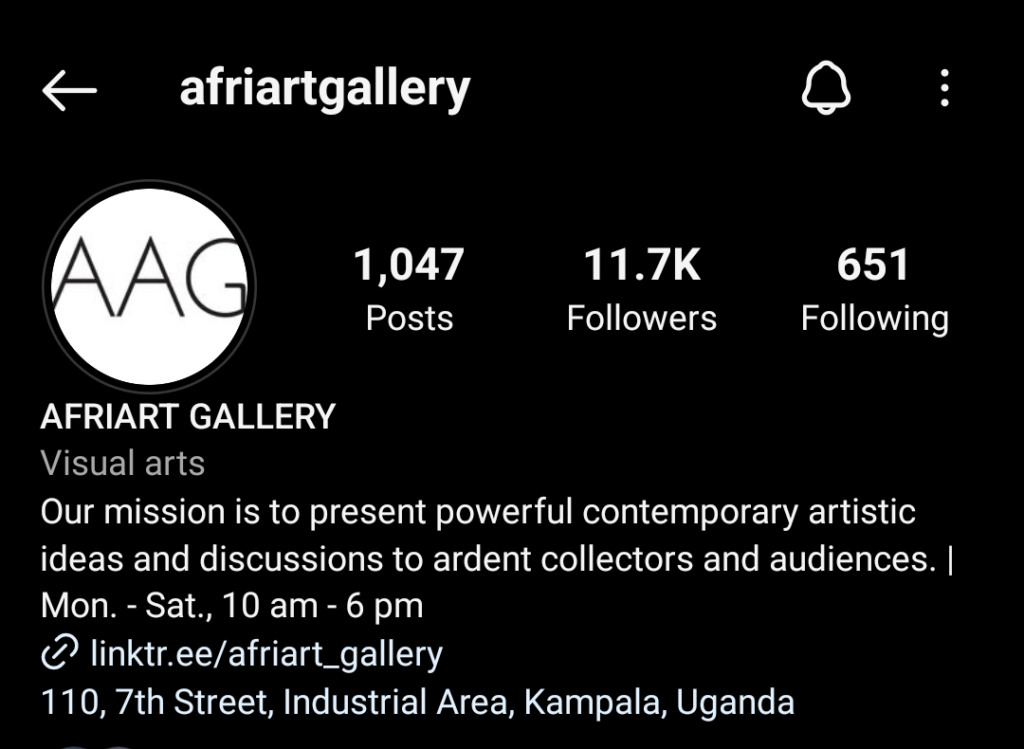
The artwork has been exhibited before and is in the series titled “Not Fragile”. So I urge those who are going to see this exhibition to treat the artist as such and to ask them whether their chosen ideology, from which both they and the gallery are making money, is consistent. To look for the traces of freethinking in this process and to think critically about what they are seeing, as I am not convinced that a Christian Feminist, especially in the Ugandan context, is a free thinker or even a conscious subject. They are the continuation of a colonial project that established itself and still thrives on cultural, epistemic, and physical violence.
I will end this with an excerpt from Achille Mbembe’s book Critique of Black Reason:
“Still today, as soon as the subject of Blacks and Africa is raised, words do not necessarily represent things; the true and the false become inextricable; the signification of the sign is not always adequate to what is being signified. It is not only that the sign is substituted for the thing. Word and image often have little to say about the objective world. The world of words and signs has become autonomous to such a degree that it exists not only as a screen possessed by its subject, its life, and the conditions of its production but as a force of its own, capable of emancipating itself from all anchoring in reality.”
Most of these artists, when asked about this topic and how they reconcile their position with decolonial cultural work, use vague vocabulary along the lines of “unlearning” and “making space”. But education has to lead somewhere. Knowledge and theory produced have to be grounded in practices that are reflective of these uncovered histories and investigations. When they fail to do that, it only breeds cynicism and indicates intellectual and cultural mediocrity. But I hope that on this occasion, this will be a good platform to break through as you “quite literally and metaphorically sit with her in introspection and dialogue”.